-
EXECUTIVE SUMMARY
-
2.
-
MARKET INTRODUCTION
-
2.1.
-
Definition
-
2.2.
-
Scope of the Study
-
2.2.1.
-
Research Objective
-
2.2.2.
-
Assumptions
-
2.2.3.
-
Limitations
-
3.
-
RESEARCH METHODOLOGY
-
3.1.
-
Overview
-
3.2.
-
Data Mining
-
3.3.
-
Secondary Research
-
3.4.
-
Primary Research
-
3.4.1.
-
Primary Interviews and Information Gathering Process
-
Breakdown of Primary Respondents
-
Forecasting Modality
-
Market Size Estimation
- Bottom-Up Approach
- Top-Down Approach
-
Data Triangulation
-
Validation
-
MARKET DYNAMICS
-
Overview
-
Drivers
-
Restraints
-
Opportunities
-
MARKET FACTOR ANALYSIS
-
Value Chain Analysis
-
Porter’s Five
- Bargaining Power of Buyers
- Threat of New Entrants
- Threat of Substitutes
- Intensity of Rivalry
-
Forces Analysis
-
5.2.1.
-
Bargaining Power of Suppliers
-
COVID-19 Impact Analysis
- Market Impact Analysis
- Regional Impact
- Opportunity and
-
Threat Analysis
-
6.
-
GLOBAL MENSWEAR MARKET, BY TYPE
-
Overview
-
Trousers
-
Denims
-
Shirts and T-Shirts
-
Ethnic Wear
-
Others
-
GLOBAL MENSWEAR MARKET, BY SEASON
-
Overview
-
Summer Wear
-
Winter Wear
-
All-Season Wear
-
GLOBAL MENSWEAR MARKET, BY DISTRIBUTION CHANNEL
-
Overview
-
Supermarkets and
-
Hypermarkets
-
8.3.
-
Exclusive Stores
-
8.4.
-
Multi-Brand Retail Outlets
-
Online Stores
-
Others
-
GLOBAL MENSWEAR MARKET, BY REGION
-
Overview
-
North America
- US
- Canada
-
Europe
- Germany
- France
- UK
- Italy
- Spain
- Rest of Europe
-
Asia-Pacific
- China
- India
- Japan
- South Korea
- Australia
- Rest of Asia-Pacific
-
Rest of the World
- Middle East
- Africa
- Latin America
-
COMPETITIVE LANDSCAPE
-
Overview
-
Competitive Analysis
-
Market Share Analysis
-
Major Growth Strategy in the Global Menswear
-
Market,
-
10.5.
-
Competitive Benchmarking
-
Leading Players in Terms of Number of Developments in the Global
- New Product Launch/Service Deployment
- Merger &
- Sales & Operating Income, 2022
- Major Players R&D Expenditure. 2022
-
Menswear Market,
-
10.7.
-
Key developments and Growth Strategies
-
Acquisitions
-
10.7.3.
-
Joint Ventures
-
10.8.
-
Major Players Financial Matrix
-
COMPANY PROFILES
-
Adidas AG
- Company Overview
- Financial Overview
- Products Offered
- Key Developments
- SWOT Analysis
- Key Strategies
-
Burberry Group
- Company Overview
- Financial Overview
- Products Offered
- Key Developments
- SWOT Analysis
- Key Strategies
-
Plc
-
11.2.1.
-
Company Overview
-
11.2.2.
-
Financial Overview
-
11.2.3.
-
Products Offered
-
11.2.4.
-
Key Developments
-
11.2.5.
-
SWOT Analysis
-
11.2.6.
-
Key Strategies
-
11.3.
-
Gap Inc.
-
11.3.1.
-
Company Overview
-
11.3.2.
-
Financial Overview
-
11.3.3.
-
Products Offered
-
11.3.4.
-
Key Developments
-
11.3.5.
-
SWOT Analysis
-
11.3.6.
-
Key Strategies
-
11.4.
-
Giorgio Armani S.p.A
-
11.4.1.
-
Company Overview
-
11.4.2.
-
Financial Overview
-
11.4.3.
-
Products Offered
-
11.4.4.
-
Key Developments
-
11.4.5.
-
SWOT Analysis
-
11.4.6.
-
Key Strategies
-
11.5.
-
H&M Hennes & Mauritz AB
-
Kering S.A
- Company Overview
- Financial Overview
- Products Offered
- Key Developments
- SWOT Analysis
- Key Strategies
-
Levi Strauss & Co.
- Company Overview
- Financial Overview
- Products Offered
- Key Developments
- SWOT Analysis
- Key Strategies
-
NIKE INC.
- Company Overview
- Financial Overview
- Products Offered
- Key Developments
- SWOT Analysis
- Key Strategies
-
Prada S.p.A
- Company Overview
- Financial Overview
- Products Offered
- Key Developments
- SWOT Analysis
- Key Strategies
-
PVH Corp.
- Company Overview
- Financial Overview
- Products Offered
- Key Developments
- SWOT Analysis
- Key Strategies
-
Ralph Lauren Corporation.
- Company Overview
- Financial Overview
- Products Offered
- Key Developments
- SWOT Analysis
- Key Strategies
-
PVH Cor Zara S.A..
- Company Overview
- Financial Overview
- Products Offered
- Key Developments
- SWOT Analysis
- Key Strategies
-
APPENDIX
-
References
-
Related Reports
-
-
LIST OF TABLES
-
GLOBAL MENSWEAR MARKET,
-
SYNOPSIS, 2018–2032
-
GLOBAL MENSWEAR MARKET, ESTIMATES & FORECAST, 2018–2032
-
(USD BILLION)
-
TABLE
-
GLOBAL MENSWEAR MARKET, BY TYPE, 2018–2032 (USD BILLION)
-
GLOBAL MENSWEAR MARKET,
-
BY SEASON, 2018–2032 (USD BILLION)
-
GLOBAL MENSWEAR MARKET, BY DISTRIBUTION CHANNEL,
-
NORTH AMERICA: MENSWEAR MARKET, BY TYPE, 2018–2032 (USD
-
BILLION)
-
TABLE
-
NORTH AMERICA: MENSWEAR MARKET, BY SEASON, 2018–2032 (USD BILLION)
-
NORTH AMERICA:
-
MENSWEAR MARKET, BY DISTRIBUTION CHANNEL, 2018–2032 (USD BILLION)
-
US: MENSWEAR
-
MARKET, BY TYPE, 2018–2032 (USD BILLION)
-
US: MENSWEAR MARKET, BY SEASON, 2018–2032
-
(USD BILLION)
-
TABLE
-
US: MENSWEAR MARKET, BY DISTRIBUTION CHANNEL, 2018–2032 (USD BILLION)
-
CANADA: MENSWEAR
-
MARKET, BY TYPE, 2018–2032 (USD BILLION)
-
CANADA: MENSWEAR MARKET, BY SEASON, 2018–2032
-
(USD BILLION)
-
TABLE
-
CANADA: MENSWEAR MARKET, BY DISTRIBUTION CHANNEL, 2018–2032 (USD BILLION)
-
EUROPE: MENSWEAR
-
MARKET, BY TYPE, 2018–2032 (USD BILLION)
-
EUROPE: MENSWEAR MARKET, BY SEASON, 2018–2032
-
(USD BILLION)
-
TABLE
-
EUROPE: MENSWEAR MARKET, BY DISTRIBUTION CHANNEL, 2018–2032 (USD BILLION)
-
GERMANY: MENSWEAR
-
MARKET, BY TYPE, 2018–2032 (USD BILLION)
-
GERMANY: MENSWEAR MARKET, BY SEASON, 2018–2032
-
(USD BILLION)
-
TABLE
-
GERMANY: MENSWEAR MARKET, BY DISTRIBUTION CHANNEL, 2018–2032 (USD BILLION)
-
FRANCE: MENSWEAR
-
MARKET, BY TYPE, 2018–2032 (USD BILLION)
-
FRANCE: MENSWEAR MARKET, BY SEASON, 2018–2032
-
(USD BILLION)
-
TABLE
-
FRANCE: MENSWEAR MARKET, BY DISTRIBUTION CHANNEL, 2018–2032 (USD BILLION)
-
ITALY: MENSWEAR
-
MARKET, BY TYPE, 2018–2032 (USD BILLION)
-
ITALY: MENSWEAR MARKET, BY SEASON, 2018–2032
-
(USD BILLION)
-
TABLE
-
ITALY: MENSWEAR MARKET, BY DISTRIBUTION CHANNEL, 2018–2032 (USD BILLION)
-
SPAIN: MENSWEAR
-
MARKET, BY TYPE, 2018–2032 (USD BILLION)
-
SPAIN: MENSWEAR MARKET, BY SEASON, 2018–2032
-
(USD BILLION)
-
TABLE
-
SPAIN: MENSWEAR MARKET, BY DISTRIBUTION CHANNEL, 2018–2032 (USD BILLION)
-
UK: MENSWEAR
-
MARKET, BY TYPE, 2018–2032 (USD BILLION)
-
UK: MENSWEAR MARKET, BY SEASON, 2018–2032
-
(USD BILLION)
-
TABLE
-
UK: MENSWEAR MARKET, BY DISTRIBUTION CHANNEL, 2018–2032 (USD BILLION)
-
REST OF EUROPE:
-
MENSWEAR MARKET, BY TYPE, 2018–2032 (USD BILLION)
-
REST OF EUROPE: MENSWEAR MARKET, BY SEASON,
-
REST OF EUROPE: MENSWEAR MARKET, BY DISTRIBUTION CHANNEL,
-
ASIA-PACIFIC: MENSWEAR MARKET, BY TYPE, 2018–2032 (USD
-
BILLION)
-
TABLE
-
ASIA-PACIFIC: MENSWEAR MARKET, BY SEASON, 2018–2032 (USD BILLION)
-
ASIA-PACIFIC:
-
MENSWEAR MARKET, BY DISTRIBUTION CHANNEL, 2018–2032 (USD BILLION)
-
JAPAN: MENSWEAR
-
MARKET, BY TYPE, 2018–2032 (USD BILLION)
-
JAPAN: MENSWEAR MARKET, BY SEASON, 2018–2032
-
(USD BILLION)
-
TABLE
-
JAPAN: MENSWEAR MARKET, BY DISTRIBUTION CHANNEL, 2018–2032 (USD BILLION)
-
CHINA:
-
MENSWEAR MARKET, BY TYPE, 2018–2032 (USD BILLION)
-
CHINA: MENSWEAR MARKET, BY SEASON, 2018–2032
-
(USD BILLION)
-
TABLE
-
CHINA: MENSWEAR MARKET, BY DISTRIBUTION CHANNEL, 2018–2032 (USD BILLION)
-
INDIA:
-
MENSWEAR MARKET, BY TYPE, 2018–2032 (USD BILLION)
-
INDIA: MENSWEAR MARKET, BY SEASON, 2018–2032
-
(USD BILLION)
-
TABLE
-
INDIA: MENSWEAR MARKET, BY DISTRIBUTION CHANNEL, 2018–2032 (USD BILLION)
-
AUSTRALIA:
-
MENSWEAR MARKET, BY TYPE, 2018–2032 (USD BILLION)
-
AUSTRALIA: MENSWEAR MARKET, BY SEASON, 2018–2032
-
(USD BILLION)
-
TABLE
-
AUSTRALIA: MENSWEAR MARKET, BY DISTRIBUTION CHANNEL, 2018–2032 (USD BILLION)
-
SOUTH KOREA:
-
MENSWEAR MARKET, BY TYPE, 2018–2032 (USD BILLION)
-
SOUTH KOREA: MENSWEAR MARKET, BY SEASON,
-
SOUTH KOREA: MENSWEAR MARKET, BY DISTRIBUTION CHANNEL, 2018–2032
-
(USD BILLION)
-
TABLE
-
REST OF ASIA-PACIFIC: MENSWEAR MARKET, BY TYPE, 2018–2032 (USD BILLION)
-
REST
-
OF ASIA-PACIFIC: MENSWEAR MARKET, BY SEASON, 2018–2032 (USD BILLION)
-
REST OF ASIA-PACIFIC:
-
MENSWEAR MARKET, BY DISTRIBUTION CHANNEL, 2018–2032 (USD BILLION)
-
REST OF THE
-
WORLD: MENSWEAR MARKET, BY TYPE, 2018–2032 (USD BILLION)
-
REST OF THE WORLD: MENSWEAR
-
MARKET, BY SEASON, 2018–2032 (USD BILLION)
-
REST OF THE WORLD: MENSWEAR MARKET, BY DISTRIBUTION
-
CHANNEL, 2018–2032 (USD BILLION)
-
MIDDLE EAST: MENSWEAR MARKET, BY TYPE, 2018–2032
-
(USD BILLION)
-
TABLE
-
MIDDLE EAST: MENSWEAR MARKET, BY SEASON, 2018–2032 (USD BILLION)
-
MIDDLE EAST:
-
MENSWEAR MARKET, BY DISTRIBUTION CHANNEL, 2018–2032 (USD BILLION)
-
AFRICA: MENSWEAR
-
MARKET, BY TYPE, 2018–2032 (USD BILLION)
-
AFRICA: MENSWEAR MARKET, BY SEASON, 2018–2032
-
(USD BILLION)
-
TABLE
-
AFRICA: MENSWEAR MARKET, BY DISTRIBUTION CHANNEL, 2018–2032 (USD BILLION)
-
LATIN AMERICA:
-
MENSWEAR MARKET, BY TYPE, 2018–2032 (USD BILLION)
-
LATIN AMERICA: MENSWEAR MARKET, BY SEASON,
-
LATIN AMERICA: MENSWEAR MARKET, BY DISTRIBUTION CHANNEL, 2018–2032
-
(USD BILLION)
-
LIST
-
OF FIGURES
-
FIGURE
-
RESEARCH PROCESS
-
FIGURE
-
MARKET STRUCTURE FOR THE GLOBAL MENSWEAR MARKET
-
MARKET DYNAMICS FOR THE GLOBAL MENSWEAR
-
MARKET
-
FIGURE
-
GLOBAL MENSWEAR MARKET, SHARE (%), BY TYPE, 2022
-
GLOBAL MENSWEAR MARKET, SHARE (%), BY SEASON,
-
FIGURE
-
GLOBAL MENSWEAR MARKET, SHARE (%), BY DISTRIBUTION CHANNEL, 2022
-
GLOBAL MENSWEAR MARKET,
-
SHARE (%), BY REGION, 2022
-
NORTH AMERICA: MENSWEAR MARKET, SHARE (%), BY REGION, 2022
-
EUROPE:
-
MENSWEAR MARKET, SHARE (%), BY REGION, 2022
-
ASIA-PACIFIC: MENSWEAR MARKET, SHARE (%),
-
BY REGION, 2022
-
FIGURE
-
REST OF THE WORLD: MENSWEAR MARKET, SHARE (%), BY REGION, 2022
-
GLOBAL MENSWEAR MARKET:
-
COMPANY SHARE ANALYSIS, 2022 (%)
-
ADIDAS AG: FINANCIAL OVERVIEW SNAPSHOT
-
ADIDAS AG: SWOT ANALYSIS
-
FIGURE 15
-
BURBERRY GROUP PLC: FINANCIAL OVERVIEW SNAPSHOT
-
BURBERRY GROUP PLC: SWOT ANALYSIS
-
GAP INC.: FINANCIAL
-
OVERVIEW SNAPSHOT
-
FIGURE
-
GAP INC.: SWOT ANALYSIS
-
GIORGIO ARMANI S.P.A: FINANCIAL OVERVIEW SNAPSHOT
-
GIORGIO ARMANI
-
S.P.A: SWOT ANALYSIS
-
FIGURE
-
H&M HENNES & MAURITZ AB.: FINANCIAL OVERVIEW SNAPSHOT
-
H&M HENNES &
-
MAURITZ AB.: SWOT ANALYSIS
-
KERING S.A: FINANCIAL OVERVIEW SNAPSHOT
-
KERING S.A: SWOT ANALYSIS
-
FIGURE 25
-
LEVI STRAUSS & CO.: FINANCIAL OVERVIEW SNAPSHOT
-
LEVI STRAUSS & CO.: SWOT ANALYSIS
-
NIKE INC.:
-
FINANCIAL OVERVIEW SNAPSHOT
-
NIKE INC.: SWOT ANALYSIS
-
PRADA S.P.A: FINANCIAL OVERVIEW SNAPSHOT
-
PRADA S.P.A:
-
SWOT ANALYSIS
-
FIGURE
-
PVH CORP.: FINANCIAL OVERVIEW SNAPSHOT
-
PVH CORP.: SWOT ANALYSIS
-
RALPH LAUREN CORPORATIO:
-
FINANCIAL OVERVIEW SNAPSHOT
-
RALPH LAUREN CORPORATION: SWOT ANALYSIS
-
ZARA S.A.: FINANCIAL
-
OVERVIEW SNAPSHOT
-
FIGURE
-
ZARA S.A.: SWOT ANALYSIS

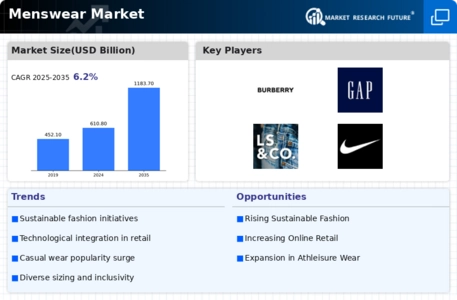
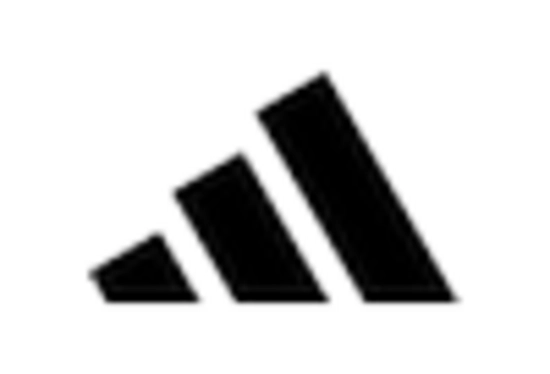
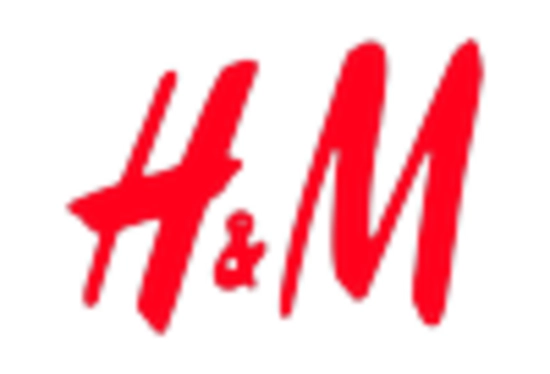
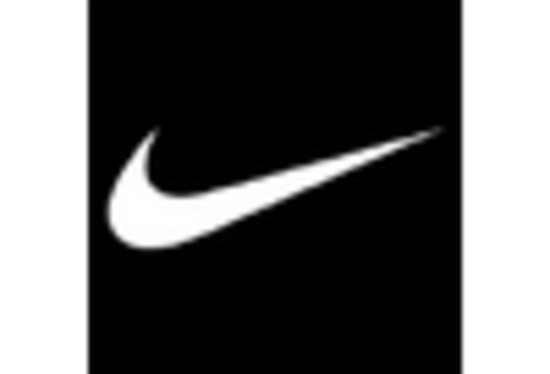
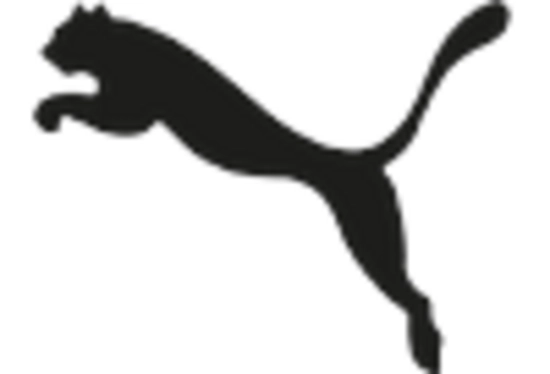
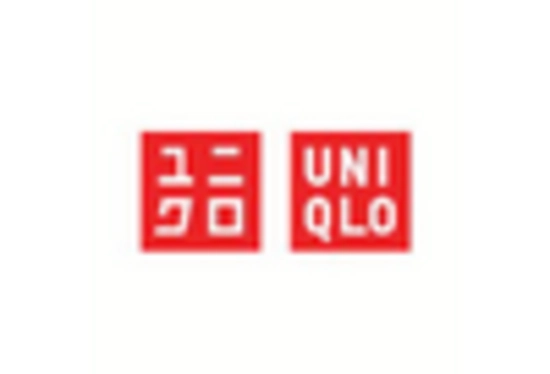
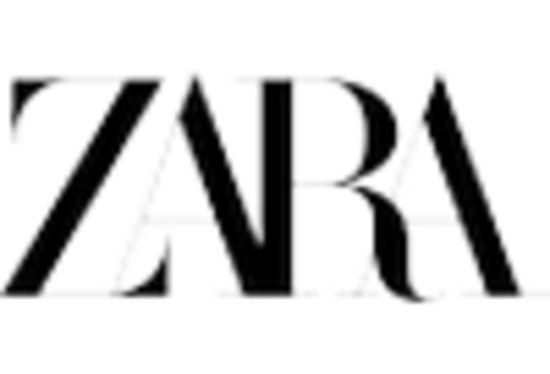

Leave a Comment